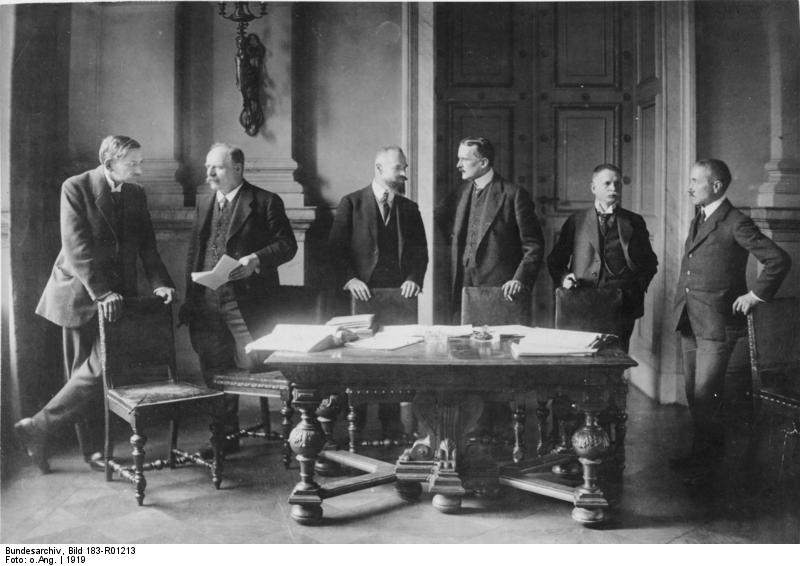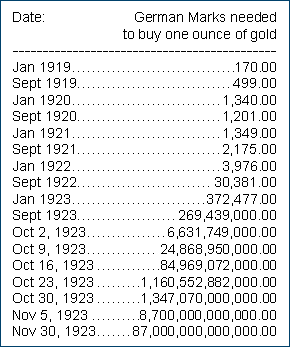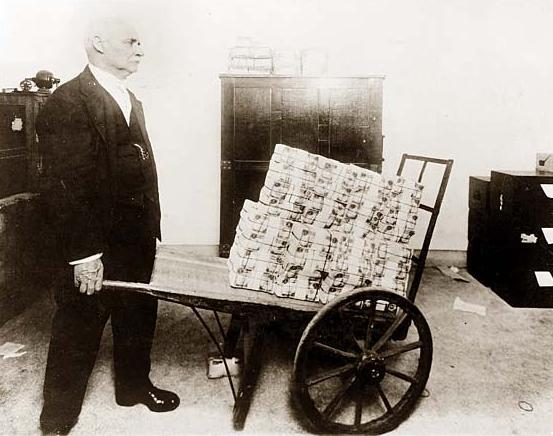A SNAPSHOT OF 1920's GERMANY
By 1920, Germany was feeling the effects of severing ties with several of it's provinces through the signing of the Treaty of Versailles. This agreement largely reduced Germany's economic power and split the country into two factions. Those that were willing to conform to the pressures from the Weimar Republic, an early attempt at democracy, and those that remained loyal to the Germanic empire of old. [1]  This dissension led to the successful execution of a coup d'etat by the former president of East Prussia, and one of the founders of the Fatherland Party, Dr. Wolfgang Kapp. Unfortunately for Kapp, a few members of the Weimar Republic were able to escape the overtaking and immediately made this plea to the working class of Germany: "The military revolt has come. Ehrhardt's naval brigade is advancing on Berlin to overthrow the government. These servants of the state, who fear the dissolution of the army, desire to put reactionaries in the seat of the government. We refuse to bend before military compulsion. We did not make the revolution in order to have again to recognize militarism. We will not cooperate with the criminals of the Baltic states. We should be ashamed of ourselves, did we act otherwise.A thousand times, No! Cease work! Stifle the opportunity of this military dictatorship! Fight with all the means at your command to retain the republic. Put all differences of opinion aside. Only one means exists against the return of Wilhelm II. That is the cessation of all means of communication. No hand may be moved. No proletarian may assist the dictator. Strike along the whole line. " This call to arms did not go unheeded. In as little as 48 hours every factory in Germany had come to a grinding halt. This effectively forced Kapp to resign from the office of the Chancellor on May 17th, a mere 4 days after taking the title. Unfortunately, this was not the end of his legacy, as on May 18th, while being followed out of Berlin by a jeering crowd the last group of his soldiers, known as the baltic troops, turned around and fired volley after volley of ammunition into the unsuspecting crowd killing hundreds. [2]  This political turmoil brought about a horrible economic climate for Germany's population. A loaf of bread went from costing a family one mark, which is equivalent to $0.64 USD today, to 200,000,000,000 marks or $127,168,589,763.30 USD today according to coinmill.com. | Yes, times were hard in Germany. From 1920-1930, Germany was a cesspool of conflict. The German Mark had fallen so low due to the Treaty of Versailles' call for reparations (it took 4 -billion- German marks to buy a single dollar). Groceries had cost billions, and thus hunger strikes broke out left and right.  |
EXAMPLES OF ARCHITECTURE AND FASHION DURING THIS ERA
[1] "Ein Zwischenruf Studiengebühren? Was sonst!". faz.net. 2012. Retrieved 21 March 2013.
[2] Wise, Michael Z. (1998). Capital dilemma: Germany's search for a new architecture of democracy. Princeton Architectural Press. p. 23. ISBN 978-1-56898-134-5.
[3] Klein, Fritz (1998). "Between Compiègne and Versailles: The Germans on the Way from a Misunderstood Defeat to an Unwanted Peace". In Boemeke, Manfred F.; Feldman, Gerald D.; Glaser, Elisabeth. Versailles: A Reassessment after 75 Years. Publications of the German Historical Institute. Cambridge University Press. pp. 203–220. ISBN 978-0-521-62132-8.
[4] Berg, S.; Winter, S.; Wassermann, A. (5 September 2005). "The Price of a Failed Reunification". Spiegel Online. Retrieved 28 November 2006.